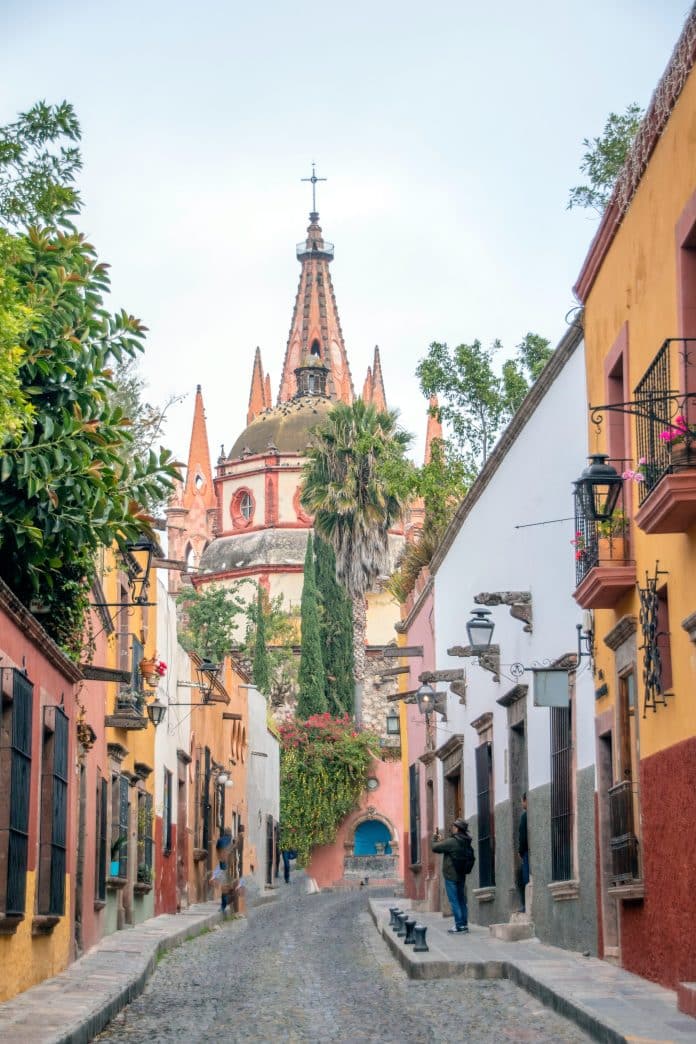My husband, Peter, and I are staying in San Miguel de Allende, Mexico, which is, according to a lot of folks, a tourist town.
Sometimes, the person saying this means it is not a place they would want to spend time. This puzzles me. I’m not sure why a town known for meatpacking or manufacturing would be a better place to spend time than a town known for tourism. But, I respect anyone’s right to spend time wherever they want, and Peter and I are happy in San Miguel, in large part because it is a tourist town.
A lot of the tourists are from the United States. A surprising number are from Canada.
“Is there anyone left up there in the winter?” I asked a Canadian visitor I met at the writers’ conference last week. There were more Canadians in the audience than folks from the U.S. and Mexico combined. I found this astonishing, considering that all of Canada has only as many people as Mexico City.
“Did you leave someone up there to turn off the lights?” I asked.
But more common than either Canadians or Americans are, of course, the Mexican tourists who come to town to enjoy the year-round festivities of San Miguel. There is always a party of some sort going on. There is music in the streets, religious celebrations, parades of zombies, costumed indigenous dancers, fireworks, and giant puppets—amazing surprises that appear every day, surprises that appear as if by magic.
And there’s no mistaking Mexican tourists for their northern counterparts.
U.S. tourists tend to look as if they are braced for calamity. They constantly refer to their maps. They wear sunscreen under their oversized hats, have trousers filled with zippered pockets, secret money belts, and hiding places for their passports. They wear shoes intended for hiking up mountains and carry water in case they should make a wrong turn at the ice cream shop and inadvertently end up marooned in the desert.
Mexican tourists are always better dressed, often in high heels, and never lost.
They wear sequins and carry small dogs, and even when I don’t know what they are saying, I can hear them using a lot of exclamation points to say it. Mexicans do not take photos of the sights but of one another, smiling broadly and usually holding their small dogs. They zip in on Friday nights and start partying immediately, hiring the mariachi bands to play songs they love and lining up at restaurants to have their favorite meals.
The U.S. tourists generally look less cheerful. They are also older. I noticed, on a rare occasion, that a store advertised in English, the sign read, “Spare parts for crutches, wheelchairs, and walking sticks.” Clearly, they knew their market.
Mexican tourists would be unlikely to need any of the above, despite the high heels, and would be more inclined to buy festive costumes for their tiny dogs.
By Monday morning, most of the Mexican tourists are gone, leaving only traces of confetti on the cobblestones, which the street cleaners work diligently to remove until they are, again, pristine and ready for the next party.
I’m trying to learn from the Mexican tourists. I’m trying to remember to smile at strangers and worry less about falling on the cobblestones (even if I keep wearing practical shoes). I’m trying to put a little more glitter in my life and a few more sequins.
Being prepared for an emergency is a good thing, of course. But being prepared for a party is every bit as important.
Till next time,
Carrie


